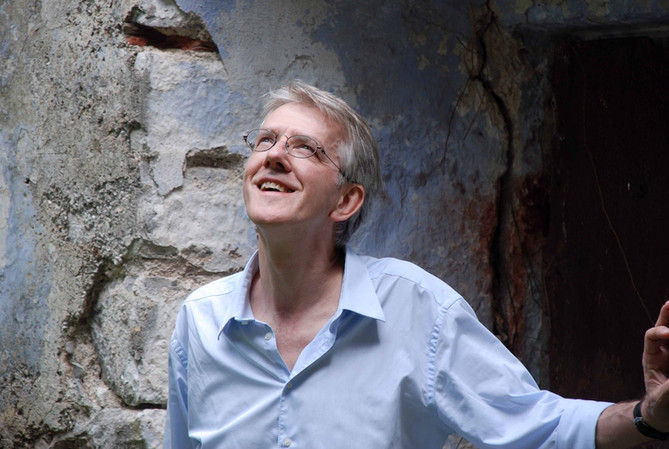Krakow’s Steel City
- timeless travels

- Jul 23, 2020
- 4 min read
by Duncan J.D. Smith

In 1990, the Lenin Steelworks were renamed for scientist and engineer Tadeusz Sendzimir Image: © Duncan J.D. Smith
During the late 1940s, the Soviet Union helped the Communist parties of war-ravaged Europe consolidate their power through the construction of model socialist cities built around large-scale industrial concerns. The motive was not only economic (to foster growth through heavy industry) but also ideological (to create a workforce loyal to the Party). Several of these factory-cities supported steel plants, with Krakow’s Nowa Huta being a great example.
New Foundry
In 1951, Nowa Huta (meaning ‘New Foundry’) became Krakow’s easternmost district. Consequently trams now run all the way out from central Krakow to Plac Centralny (‘Central Square’) in the heart of Nowa Huta’s residential district. Visitors looking out from here today, along the impressive apartment-lined streets, will find it remarkable to think that a little over 70 years ago, this was all arable land dotted only with ancient villages.
The decision to build Nowa Huta was approved in 1947 and by 1960 both the steelworks (named in honour of Vladimir Lenin) and the accommodation for its 20,000 workers (rising to 40,000 during the 1970s) had been completed. From the start, it was intended to be the proletarian antithesis of Krakow, which the Soviets perceived as decadent and bourgeois. Ironically Nowa Huta would later be the place where Solidarity (Solidarność) workers eventually took up arms against Communism in favour of democracy.

A Nowa Huta street renamed for the Solidarity workers' movement. Image: © Duncan J.D. Smith
Cold War
Nowa Huta’s housing was planned with great care. Its radial street plan fans out from Plac Centralny, with greenery breaking up the apartment blocks. That these are human in scale is because the Polish architect, Tadeusz Ptaszycki (1908–1980), looked for inspiration not to Moscow as one might imagine, but to 1920s New York and its concept of self-sufficient ‘neighbourhood units’. Nowa Huta’s clusters of apartment blocks (osiedla) are not overwhelmingly high and were given an added human element in the form of shops, restaurants and other facilities at pavement level. Less obviously, and clearly with the Cold War in mind, the wide streets were designed to prevent the spread of fire resulting from an attack, the trees were planted to absorb the effects of a bomb blast, and the overall layout was designed to facilitate guerrilla defence tactics.
Socialist Realism

Plac Centralny lies at the heart of Nowa Huta's residential district. Image: © Duncan J.D. Smith
Completed in 1949, Plac Centralny is a good example of the Soviet-sanctioned design style known as Socialist Realism in which architecture is rendered sufficiently authoritarian but then softened with a restrained amount of decoration (note, for example, the Renaissance-style pavement arcades). Original facilities that can still be seen include the Cepelix folk art shop at Os. Centrum B1 and the Centralny Milk Bar (Bar Mleczny) at Os. Centrum C 1. That latter still serves its loyal customers with generous yet affordable portions of meat and dumplings.
It was originally planned that Plac Centralny would be entirely enclosed but plans for a huge theatre on the southern side of Nowa Huta’s main axis were abandoned. Instead, in 1983 the more modest Nowa Huta Cultural Centre (Nowohuckie Centrum Kultury) was built at Al. Jana Pawła II 232, which currently contains an exhibition of paintings by dystopian artist Zdzisław Beksiński (1929–2005).

This Communist-era Milk Bar is still popular with residents. Image: © Duncan J.D. Smith
Not far away at Os. Centrum E1 is the Nowa Huta Museum (Dzieje Nowej Huty), a branch of the Museum of Krakow (Muzeum Krakowa). Housed in the former Kino Światowid, it illustrates life in Nowa Huta both past and present. A highlight is a guided tour through the nuclear fallout shelter in the cinema’s cellar, one of over 250 built across Nowa Huta during the 1950s. Other sights hereabouts include Kino Studyjne Sfinks at Os. Gorali 5 (Nowa Huta’s last working cinema), and the Museum of the Armed Act (Muzeum Czynu Zbrojnego) detailing Nazi Germany’s occupation of Poland. Also worth mentioning here is Teatr Ludowy at Os. Teatralne 34, a theatre opened in 1955 that is still going strong today.
Main Gate
Unfortunately the sprawling steelworks that gave Nowa Huta its name cannot be visited. However, it’s still worth taking Tram 21 or 22 out to the end station at Kombinat to see the impressive main gate. Since 1990 following the collapse of Communism the plant has been called the Tadeusz Sendzimir Steelworks in honour of a renowned Polish scientist and engineer. On a final and wholly unexpected flourish, the gate is flanked by a pair of remarkable neo-Renaissance administration blocks. Abandoned in recent years, these can now be explored on a guided tour (https://fundacjanh.bookero.pl/). With Nowa Huta’s main furnaceswitched off recently, too, perhaps parts of the steelworks will also soon be open to interested visitors.
Adapted from the book Only in Krakow: A Guide to Unique Locations, Hidden Corners and Unusual Objects by Duncan JD Smith (published by The Urban Explorer).
Also in this series:
About the Author
Explorer and travel writer Duncan JD Smith first got the history bug when his grandfather unearthed the grave of a Roman soldier. He opened his own museum aged eleven and went on to study archaeology at Birmingham. After many years in travel publishing, in 2003 he relocated to Vienna, where he writes and publishes his Only In Guides, a series of city guides for independent cultural travellers. Duncan is a Fellow of the Royal Geographical Society. www.duncanjdsmith.com and www.onlyinguides.com.








Comments